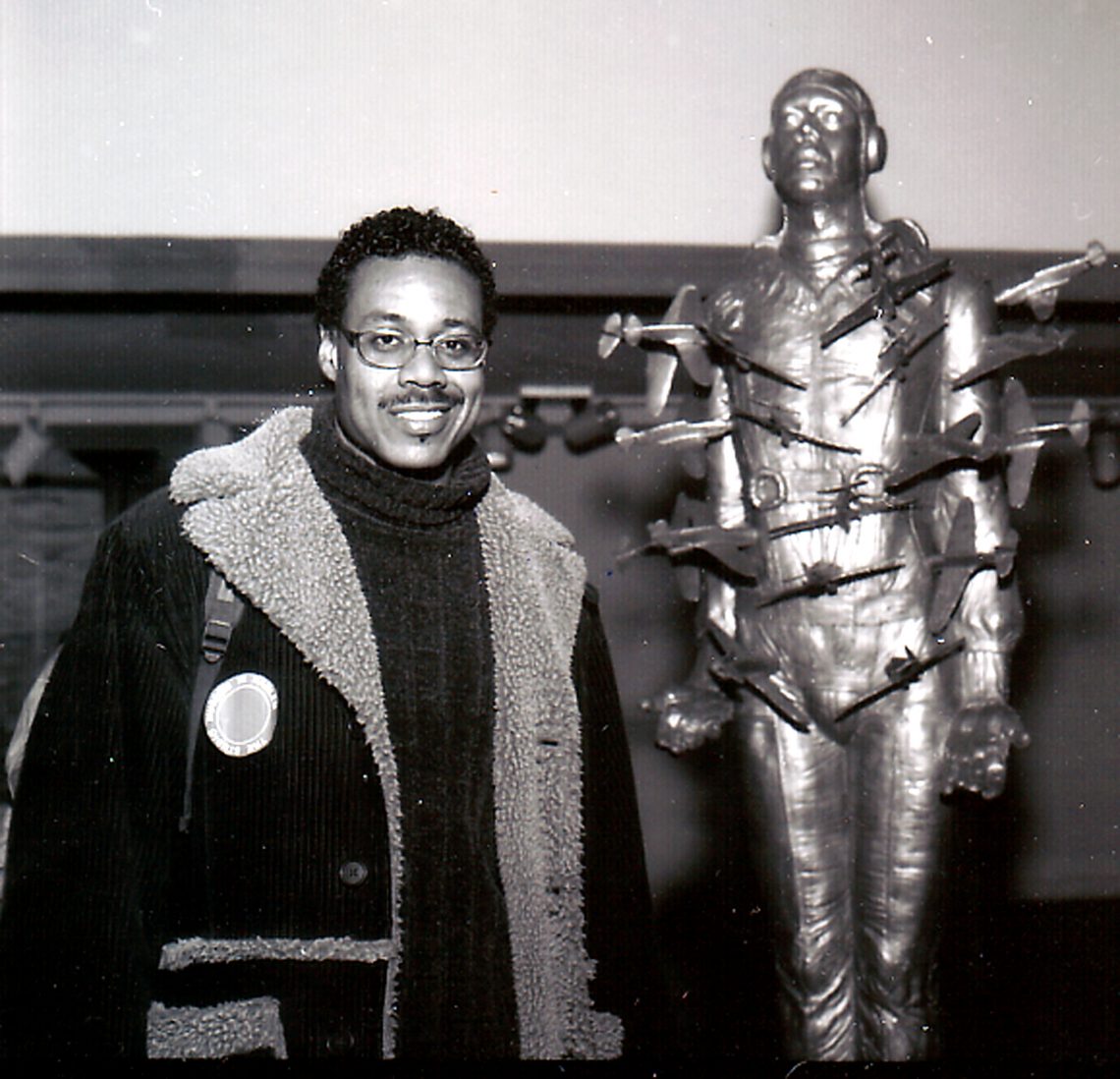
Stanford Department of Art and Art History presents “Michael Richards: Winged”
On view at the Stanford Art Gallery Jan. 22-Mar. 24 with a reception on Thursday, Jan., 24, 5–7 p.m., and an academic symposium on Friday, Feb. 8.
Stanford University’s Department of Art and Art History presents Michael Richards: Winged, a solo exhibition of sculpture and drawing dedicated to the late artist Michael Richards (1963–2001). Curated by Alex Fialho and Melissa Levin, Michael Richards: Winged will be on view at the Stanford Art Gallery Jan. 22 through Mar. 24, 2019, with a reception on Thursday, Jan, 24, 5–7 p.m., and an academic symposium on Friday, Feb. 8.
On the morning of Sept. 11, 2001, Richards was working in his Lower Manhattan Cultural Council (LMCC) World Views studio on the 92nd floor of World Trade Center, Tower One, when the first plane struck, taking his life along with the thousands of others who passed away in the tragic events of that day. At the time of his passing, Richards was an emerging artist whose incisive aesthetic—always provocative, at times playful, yet never without a critical bent—held immense promise to make him a leading figure in contemporary art.
“Traveling Michael Richards: Winged to the Stanford Art Gallery will mark the first time this incisive and prescient artist’s powerful body of work will be seen in California,” said Fialho and Levin. “We are additionally excited about gathering scholars, artists, students, and the public together for Flight, Diaspora, Identity, and Afterlife: A Symposium on the Art of Michael Richards. It will be a uniquely dynamic opportunity to expand the contemporary conversation around Richards’ art and the still urgent and resonant themes of racial inequity and social injustice that he interrogated in his lifetime,”
Materially and conceptually, Richards used the language of metaphor in his art to investigate racial inequity and the tension between assimilation and exclusion. Aviation, flight and escape were central themes of Richards’ work, gesturing towards both repression and reprieve from social injustices and the simultaneous possibilities of uplift and downfall, often in the context of the historical and ongoing oppression of black people. Significant points of reference for Richards included the Tuskegee Airmen—the first African-American pilots in United States military history—and the complexity of their triumphs in the face of segregation, as well as religious and ritual figures and stories from African and Judeo-Christian traditions. Centering his own experience, Richards used his body to cast the figures for his sculptures, which often appear as pilots, saints, or both.
In light of his passing on 9/11, Richards' work evokes a charged afterlife and prescient significance. In tandem, his words and the sociopolitical context of his lifetime create multiple readings and metaphoric possibilities. Richards poetically described flight in his practice: “The idea of flight relates to my use of pilots and planes, but it also references… the idea of being lifted up, enraptured, or taken up to a safe place—to a better world.”
“When I first saw Michael Richards’ work back in New York in 2016, I was deeply moved,” recalls Harry Elam, senior vice provost for education and vice president for the arts, Stanford University. “Now, I am truly thrilled that the Stanford community as a whole will have the opportunity learn of Michael Richards’ story and to see his compelling artistry on campus. Richard’s artistic creations are decidedly prescient and particular evocative. Vividly in Richards’ sculptures, issues of racial justice and history, past and present intersect and literally take flight. That there will be a symposium accompanying the exhibition of Michael Richards: Winged is equally significant. This event will provide audiences with an additional opportunity to process, explore, and discuss the context for and the power of his creations.”
Alexander Nemerov, chair of the Department of Art and Art History, Stanford University, is also looking forward to the exhibition. “Having Michael Richards’s work here on campus for this exhibition is a major event. His unique art rhymes the glories and terrors of aviation with the experience of being a black person in the United States. It is like he is an honorary Tuskegee Airman, an artist who has flown.”
ABOUT THE SYMPOSIUM
Flight, Diaspora, Identity, & Afterlife: A Symposium on the Art of Michael Richards brings together a preeminent group of artists, including William Cordova and Dread Scott, and Stanford scholars—Jennifer Brody, Jonathan Calm, Jakeya Caruthers, Harry Elam, Michele Elam, Marci Kwon, Richard Meyer, Alexander Nemerov, and Rose Salseda. The Feb. 8 symposium will explore and discuss themes Richards addressed throughout his life and artistic practice, including flight, diaspora, identity, and afterlife, specifically in the context of historic and ongoing social injustice and racial inequity.
Michael Rolando Richards was born in 1963 in Brooklyn, New York, and raised in Kingston, Jamaica. He received a BA from Queens College and an MA from New York University. During his lifetime, Richards won several competitive awards and participated in numerous international exhibitions. His work is in the collections of the Studio Museum in Harlem, Brooklyn Museum, Virginia Museum of Fine Art, and Pérez Art Museum Miami. Franconia Sculpture Park in Minnesota is home to a permanent memorial to Michael Richards.
Michael Richards: Winged was first presented in 2016 by Lower Manhattan Cultural Council.
Co-sponsored by Office of the President, Office of the Vice President for the Arts, Office of the Vice Provost for Undergraduate Education, the Denning Family, V. Joy Simmons, MD, Institute for Diversity in the Arts, and Stanford Live.
#MichaelRichardsWinged @stanfordarts
VISITOR INFORMATION: The Stanford Art Gallery is located on Stanford’s campus at 419 Lasuen Mall, off Palm Drive. Visitor parking is free all day on the weekend and after 4:00 pm on weekdays, except by the Oval.
Map: http://campus-map.stanford.edu/?id=03-001
Parking: https://transportation.stanford.edu/parking/purchase-a-parking-permit/visitors
Exhibition web page: https://events.stanford.edu/events/803/80334/
Symposium web page: https://events.stanford.edu/events/803/80344/
Symposium RSVP: https://www.eventbrite.com/e/flight-diaspora-identity-afterlife-a-symposium-on-the-art-of-michael-richards-tickets-51097894177
Image: Michael Richards with Tar Baby vs. St. Sebastian, 1999. Photograph by Frank Stewart.
